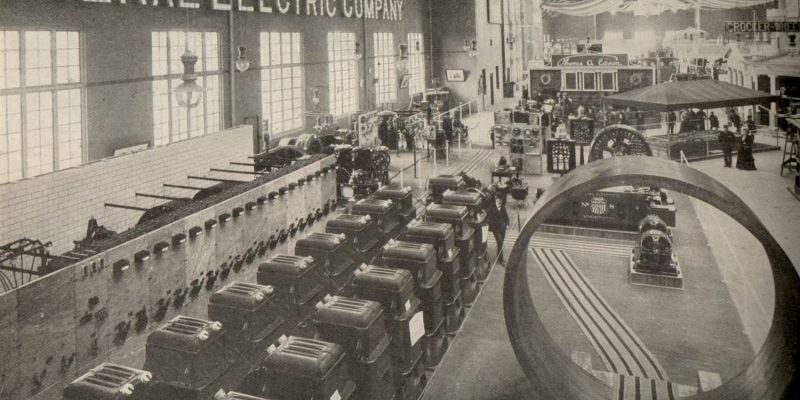General Electric is among the most widely recognized and far-reaching appliance suppliers in the world. Read on to learn more about the history of the company that supplies us with some of our favorite appliances.
 Believe it or not, General Electric has ties with Thomas Edison himself. Back in 1889, Edison had business interests in a lot of electricity-related companies on the East Coast. Eventually a company founded by J.P. Morgan and Anthony J. Drexel called Drexel, Morgan & Co. financed Edison’s research and helped merge all of his companies into one larger corporation under the name Edison General Electric Company, which was officially incorporated in New York on April 24, 1889.
Believe it or not, General Electric has ties with Thomas Edison himself. Back in 1889, Edison had business interests in a lot of electricity-related companies on the East Coast. Eventually a company founded by J.P. Morgan and Anthony J. Drexel called Drexel, Morgan & Co. financed Edison’s research and helped merge all of his companies into one larger corporation under the name Edison General Electric Company, which was officially incorporated in New York on April 24, 1889.
Simultaneously, Charles Coffin, the leader of Thomson-Houston Electric Company, acquired a number of his competitors and was able to access their valuable patents. When Edison General Electric Company of Schenactady, New York was merged with Thomson-Houston Electric Company of Lynn, Massachusetts, they formed General Electric.
GE went public in 1896 and was one of the original 12 companies to be listed on the Dow Jones Industrial Average when it first formed. It is the only original company to still be listed on the Dow Index today, 119 years later, though it’s worth nothing that GE has not been listed on the index continuously.
GE always had a specialty for growing to access and encompass new, burgeoning markets. For example, in 1919 Owen D. Young was able to found the Radio Corporation of America (RCA) through GE. In 1927, Ernst Alexanderson of GE revealed his first demonstration of television broadcasts at his General Electric Realty Plot home. That next year he was to make the first television broadcast to the public in the United States, all on GE equipment. General Electric even operated some television stations until 1983.
 GE also maintained a strong hold over the field of power generation. Its experience working with turbines enabled the company to excel in creating new types of aircraft turbosuperchargers. GE introduced the first ever supercharges as part of the war effort during World War I, and continued to develop them during the interim between World War I and World War II. The superchargers were put to use again during World War II. GE then moved on to create jet engines in 1941 and eventually earned a ranking of ninth place among all American corporations in terms of the value of its wartime production contracts.
GE also maintained a strong hold over the field of power generation. Its experience working with turbines enabled the company to excel in creating new types of aircraft turbosuperchargers. GE introduced the first ever supercharges as part of the war effort during World War I, and continued to develop them during the interim between World War I and World War II. The superchargers were put to use again during World War II. GE then moved on to create jet engines in 1941 and eventually earned a ranking of ninth place among all American corporations in terms of the value of its wartime production contracts.
GE’s war efforts have not always been popular with the public; its role in producing nuclear weapons led many American consumers to boycott GE products throughout the 1980’s and 1990’s.
GE has also had its hand in the development of computers and the computing market. GE was actually the first business in the world to own a computer, and in the 1950’s they were the largest user of computers with the exception of the American federal government. Perhaps this deep involvement with the development of computers led GE to enter the computer production game; it ranked among the top eight major computer companies of the 1960’s and even released its own line of personal computers throughout the decade.
More recently, GE expanded into the windpower realm when it acquired windpower assets from Enron after its bankruptcy proceedings in 2002.
In the past few decades, GE‘s acquisitions and divestments have come to create an immensely complicated financial history understandable only to the business elite; it owned and sold a Polish banking company, completed a spin-off of most of its mortgage and life insurance assets into another independent company, made NBCUniversal a joint venture between GE and Comcast, and did a variety of other things that revealed the surprisingly wide scope necessary to see the extent of the company’s power within many different markets and financial sectors.

